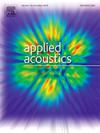Improvement of pipeline leak detection method: Integration of spectral entropy and sample entropy for better description of complexity features
IF 3.4
2区 物理与天体物理
Q1 ACOUSTICS
引用次数: 0
Abstract
Entropy measures signal complexity and can aid in pipeline leak detection, but most studies rely on time-domain entropy alone, overlooking spectral complexity. In the vicinity of pipeline systems, there are often complex machines operating continuously. During the experiment, noise from an air compressor was often mistaken for a leak signal due to overlapping time-domain entropy characteristics. To address this, we analyze the failure mechanisms of time-domain entropy features in such scenarios by constructing representative signals and propose a pipeline leak detection method based on Spectral Entropy-Sample Entropy (SE-SampEn). This method better captures the complexity of leak signals, improving detection accuracy under diverse noise interferences. Firstly, the primary components of the signal are extracted through variational mode decomposition (VMD), enabling the removal of background noise during the SE calculation process. Subsequently, an applicability analysis of selected signal features is conducted, and feature vectors are constructed and input into various classifiers to achieve effective leakage detection in the water supply pipeline. The results demonstrate that the accuracy reached 97% when both SE and SampEn were utilized, but dropped to 84% and 87% when SE and SampEn were omitted, respectively. This indicates the necessity of using both SE and SampEn to fully describe the complexity feature of the leakage signal in complex noise environments.
求助全文
约1分钟内获得全文
求助全文
来源期刊

Applied Acoustics
物理-声学
CiteScore
7.40
自引率
11.80%
发文量
618
审稿时长
7.5 months
期刊介绍:
Since its launch in 1968, Applied Acoustics has been publishing high quality research papers providing state-of-the-art coverage of research findings for engineers and scientists involved in applications of acoustics in the widest sense.
Applied Acoustics looks not only at recent developments in the understanding of acoustics but also at ways of exploiting that understanding. The Journal aims to encourage the exchange of practical experience through publication and in so doing creates a fund of technological information that can be used for solving related problems. The presentation of information in graphical or tabular form is especially encouraged. If a report of a mathematical development is a necessary part of a paper it is important to ensure that it is there only as an integral part of a practical solution to a problem and is supported by data. Applied Acoustics encourages the exchange of practical experience in the following ways: • Complete Papers • Short Technical Notes • Review Articles; and thereby provides a wealth of technological information that can be used to solve related problems.
Manuscripts that address all fields of applications of acoustics ranging from medicine and NDT to the environment and buildings are welcome.
 求助内容:
求助内容: 应助结果提醒方式:
应助结果提醒方式:


